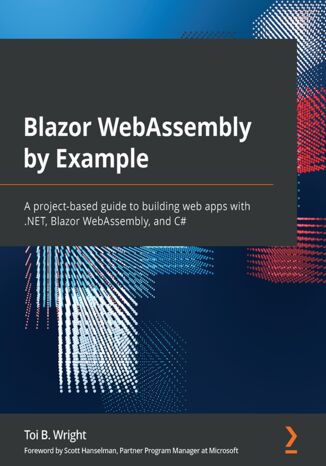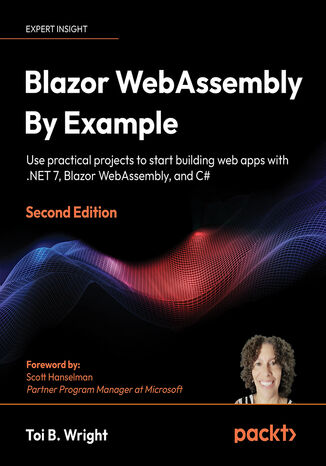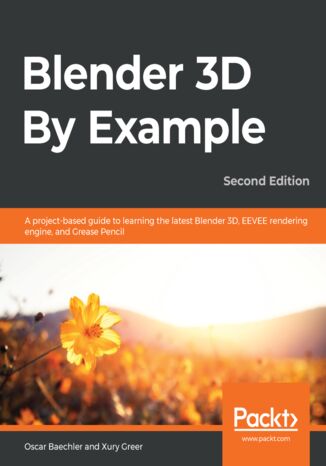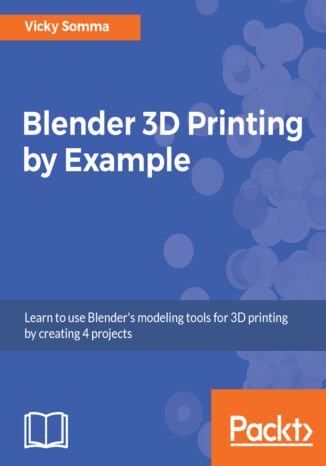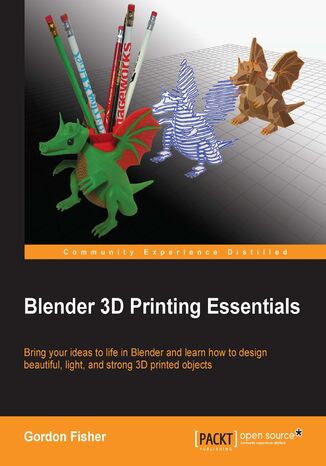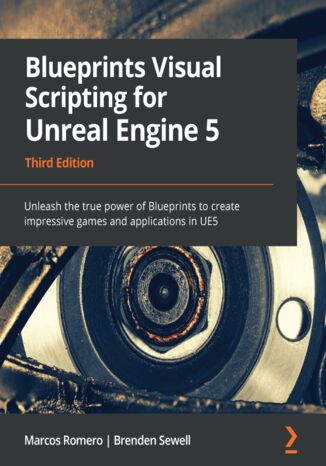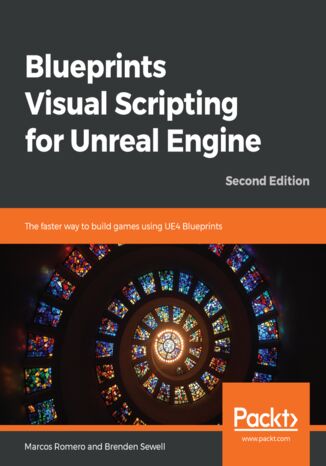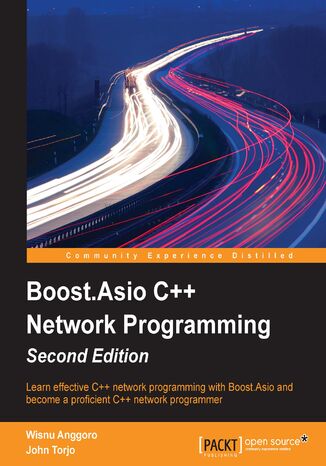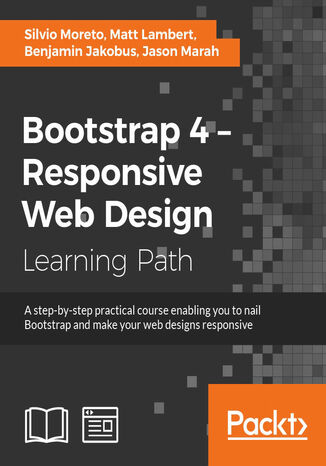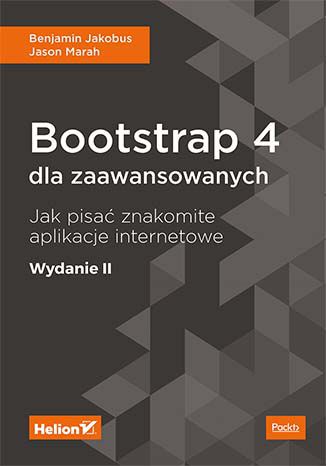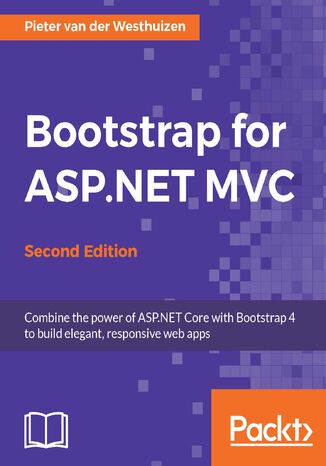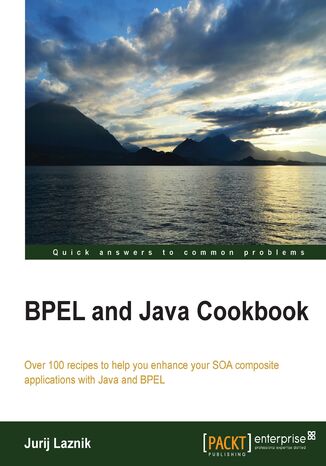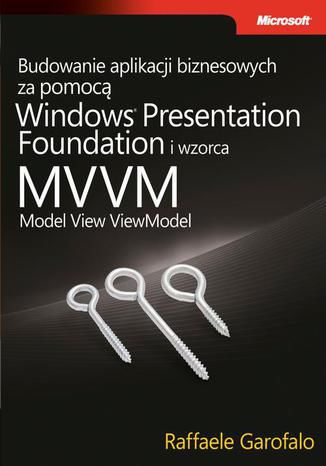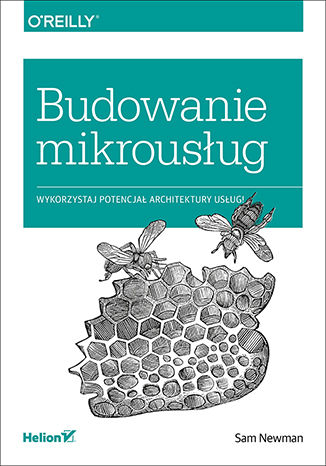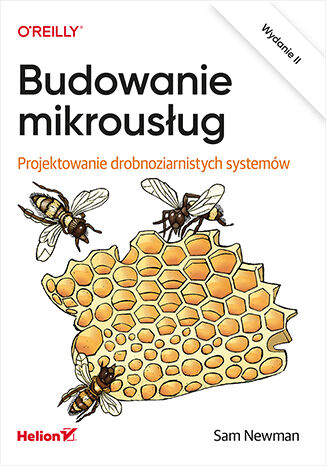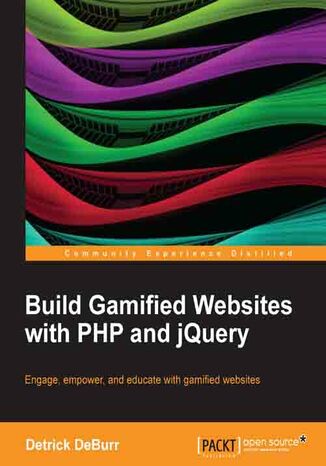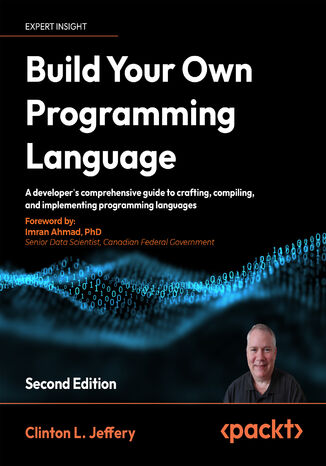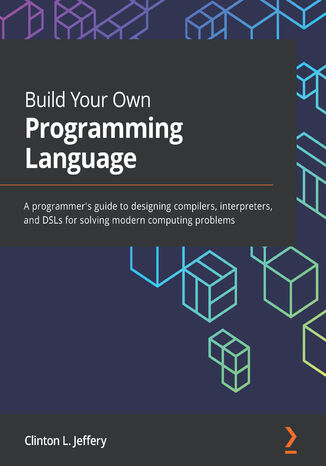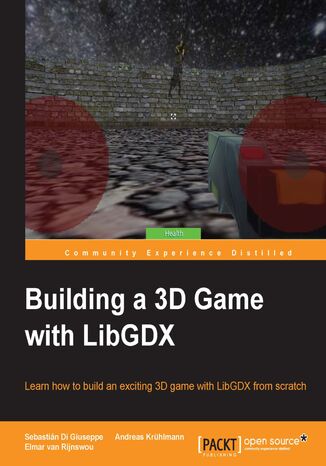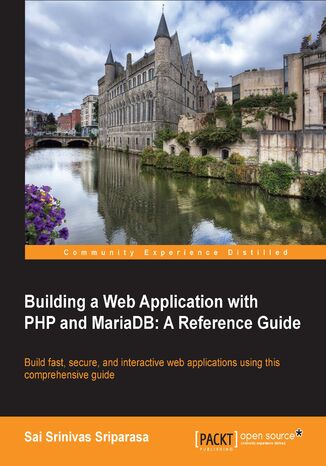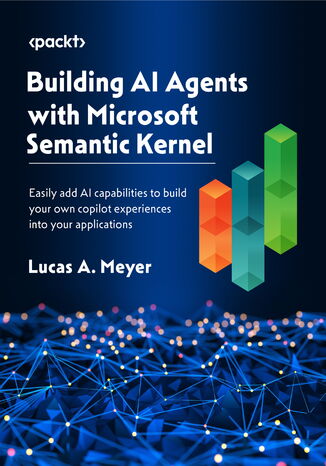Категорії
-
- Біткойн
- Ділова жінка
- Коучинг
- Контроль
- Електронний бізнес
- Економіка
- Фінанси
- Фондова біржа та інвестиції
- Особисті компетенції
- Комп'ютер в офісі
- Комунікація та переговори
- Малий бізнес
- Маркетинг
- Мотивація
- Мультимедійне навчання
- Нерухомість
- Переконання та НЛП
- Податки
- Соціальна політика
- Порадники
- Презентації
- Лідерство
- Зв'язки з громадськістю
- Звіти, аналізи
- Секрет
- Соціальні засоби комунікації
- Продаж
- Стартап
- Ваша кар'єра
- Управління
- Управління проектами
- Людські ресурси (HR)
-
- Architektura i wnętrza
- Безпека життєдіяльності
- Biznes i Ekonomia
- Будинок та сад
- Електронний бізнес
- Ekonomia i finanse
- Езотерика
- Фінанси
- Особисті фінанси
- Бізнес
- Фотографія
- Інформатика
- Відділ кадрів та оплата праці
- Для жінок
- Комп'ютери, Excel
- Бухгалтерія
- Культура та література
- Наукові та академічні
- Охорона навколишнього середовища
- Впливові
- Освіта
- Податки
- Подорожі
- Психологія
- Релігія
- Сільське господарство
- Ринок книг і преси
- Транспорт та спедиція
- Здоров'я та краса
-
- Офісні застосунки
- Бази даних
- Біоінформатика
- Бізнес ІТ
- CAD/CAM
- Digital Lifestyle
- DTP
- Електроніка
- Цифрова фотографія
- Комп'ютерна графіка
- Ігри
- Хакування
- Hardware
- IT w ekonomii
- Наукові пакети
- Шкільні підручники
- Основи комп'ютера
- Програмування
- Мобільне програмування
- Інтернет-сервери
- Комп'ютерні мережі
- Стартап
- Операційні системи
- Штучний інтелект
- Технологія для дітей
- Вебмайстерність
-
- Антології
- Балада
- Біографії та автобіографії
- Для дорослих
- Драми
- Журнали, щоденники, листи
- Епос, епопея
- Нарис
- Наукова фантастика та фантастика
- Фельєтони
- Художня література
- Гумор, сатира
- Інше
- Класичний
- Кримінальний роман
- Нехудожня література
- Художня література
- Mity i legendy
- Лауреати Нобелівської премії
- Новели
- Побутовий роман
- Okultyzm i magia
- Оповідання
- Спогади
- Подорожі
- Оповідна поезія
- Поезія
- Політика
- Науково-популярна
- Роман
- Історичний роман
- Проза
- Пригодницька
- Журналістика
- Роман-репортаж
- Romans i literatura obyczajowa
- Сенсація
- Трилер, жах
- Інтерв'ю та спогади
-
- Археологія
- Bibliotekoznawstwo
- Кінознавство / Теорія кіно
- Філологія
- Польська філологія
- Філософія
- Finanse i bankowość
- Географія
- Економіка
- Торгівля. Світова економіка
- Історія та археологія
- Історія мистецтва і архітектури
- Культурологія
- Мовознавство
- літературні студії
- Логістика
- Математика
- Ліки
- Гуманітарні науки
- Педагогіка
- Навчальні засоби
- Науково-популярна
- Інше
- Психологія
- Соціологія
- Театральні студії
- Богослов’я
- Економічні теорії та науки
- Transport i spedycja
- Фізичне виховання
- Zarządzanie i marketing
-
- Безпека життєдіяльності
- Історія
- Дорожній кодекс. Водійські права
- Юридичні науки
- Охорона здоров'я
- Загальне, компендіум
- Академічні підручники
- Інше
- Закон про будівництво і житло
- Цивільне право
- Фінансове право
- Господарське право
- Господарське та комерційне право
- Кримінальний закон
- Кримінальне право. Кримінальні злочини. Кримінологія
- Міжнародне право
- Міжнародне та іноземне право
- Закон про охорону здоров'я
- Закон про освіту
- Податкове право
- Трудове право та законодавство про соціальне забезпечення
- Громадське, конституційне та адміністративне право
- Кодекс про шлюб і сім'ю
- Аграрне право
- Соціальне право, трудове право
- Законодавство Євросоюзу
- Промисловість
- Сільське господарство та захист навколишнього середовища
- Словники та енциклопедії
- Державні закупівлі
- Управління
-
- Африка
- Альбоми
- Південна Америка
- Центральна та Північна Америка
- Австралія, Нова Зеландія, Океанія
- Австрія
- Азії
- Балкани
- Близький Схід
- Болгарія
- Китай
- Хорватія
- Чеська Республіка
- Данія
- Єгипет
- Естонія
- Європа
- Франція
- Гори
- Греція
- Іспанія
- Нідерланди
- Ісландія
- Литва
- Латвія
- Mapy, Plany miast, Atlasy
- Мініпутівники
- Німеччина
- Норвегія
- Активні подорожі
- Польща
- Португалія
- Інше
- Przewodniki po hotelach i restauracjach
- Росія
- Румунія
- Словаччина
- Словенія
- Швейцарія
- Швеція
- Світ
- Туреччина
- Україна
- Угорщина
- Велика Британія
- Італія
-
- Філософія життя
- Kompetencje psychospołeczne
- Міжособистісне спілкування
- Mindfulness
- Загальне
- Переконання та НЛП
- Академічна психологія
- Психологія душі та розуму
- Психологія праці
- Relacje i związki
- Батьківство та дитяча психологія
- Вирішення проблем
- Інтелектуальний розвиток
- Секрет
- Сексуальність
- Спокушання
- Зовнішній вигляд та імідж
- Філософія життя
-
- Біткойн
- Ділова жінка
- Коучинг
- Контроль
- Електронний бізнес
- Економіка
- Фінанси
- Фондова біржа та інвестиції
- Особисті компетенції
- Комунікація та переговори
- Малий бізнес
- Маркетинг
- Мотивація
- Нерухомість
- Переконання та НЛП
- Податки
- Соціальна політика
- Порадники
- Презентації
- Лідерство
- Зв'язки з громадськістю
- Секрет
- Соціальні засоби комунікації
- Продаж
- Стартап
- Ваша кар'єра
- Управління
- Управління проектами
- Людські ресурси (HR)
-
- Антології
- Балада
- Біографії та автобіографії
- Для дорослих
- Драми
- Журнали, щоденники, листи
- Епос, епопея
- Нарис
- Наукова фантастика та фантастика
- Фельєтони
- Художня література
- Гумор, сатира
- Інше
- Класичний
- Кримінальний роман
- Нехудожня література
- Художня література
- Mity i legendy
- Лауреати Нобелівської премії
- Новели
- Побутовий роман
- Okultyzm i magia
- Оповідання
- Спогади
- Подорожі
- Поезія
- Політика
- Науково-популярна
- Роман
- Історичний роман
- Проза
- Пригодницька
- Журналістика
- Роман-репортаж
- Romans i literatura obyczajowa
- Сенсація
- Трилер, жах
- Інтерв'ю та спогади
-
- Філософія життя
- Міжособистісне спілкування
- Mindfulness
- Загальне
- Переконання та НЛП
- Академічна психологія
- Психологія душі та розуму
- Психологія праці
- Relacje i związki
- Батьківство та дитяча психологія
- Вирішення проблем
- Інтелектуальний розвиток
- Секрет
- Сексуальність
- Спокушання
- Зовнішній вигляд та імідж
- Філософія життя
- Електронні книги
- Інформатика
- Програмування
Програмування
Nasza biblioteka online zawiera szereg publikacji, dzięki którym programowanie nie będzie mieć przed Tobą żadnych tajemnic. Zawarte tu książki przybliżą Ci takie języki jak HTML, JavaScript, Python czy CSS. Dowiesz się dzięki nim także tego, jak tworzyć efektywne algorytmy, projektować aplikacje mobilne, czy dbać o poprawną architekturę informacji w serwisach internetowych.
Toi B. Wright, Scott Hanselman
Blazor WebAssembly makes it possible to run C# code on the browser instead of having to use JavaScript, and does not rely on plugins or add-ons. The only technical requirement for using Blazor WebAssembly is a browser that supports WebAssembly, which, as of today, all modern browsers do. Blazor WebAssembly by Example is a project-based guide for learning how to build single-page web applications using the Blazor WebAssembly framework. This book emphasizes the practical over the theoretical by providing detailed step-by-step instructions for each project.You'll start by building simple standalone web applications and progress to developing more advanced hosted web applications with SQL Server backends. Each project covers a different aspect of the Blazor WebAssembly ecosystem, such as Razor components, JavaScript interop, event handling, application state, and dependency injection. The book is designed in such a way that you can complete the projects in any order.By the end of this book, you will have experience building a wide variety of single-page web applications with .NET, Blazor WebAssembly, and C#.
Toi B. Wright, Scott Hanselman
Blazor WebAssembly helps developers build web applications without the need for JavaScript, plugins, or add-ons. With its continued growth in popularity, getting started with Blazor now can open doors to new career paths and exciting projects – and Blazor WebAssembly by Example will make your first steps easier. This is a project-based guide that will teach you how to build single-page web applications with Blazor, focusing heavily on the practical over the theoretical by providing detailed step-by-step instructions for each project. The author also includes a video for each project showing her following the step-by-step instructions, so readers can use them if they're unsure about any particular step.In this updated edition, you'll start by building simple standalone web applications and gradually progress to developing more advanced hosted web applications with SQL Server backends. Each project will cover a different aspect of the Blazor WebAssembly ecosystem, such as Razor components, JavaScript interop, security, event handling, debugging on the client, application state, and dependency injection. The book’s projects get more challenging as you progress, but you don’t have to complete them in order, which makes this book a valuable resource for beginners as well as those who just want to dip into specific topics.By the end of this book, you will have experience and lots of know-how on how to build a wide variety of single-page web applications with .NET, Blazor WebAssembly, and C#.
Blender is a powerful 3D creation package that supports every aspect of the 3D pipeline. With this book, you'll learn about modeling, rigging, animation, rendering, and much more with the help of some interesting projects.This practical guide, based on the Blender 2.83 LTS version, starts by helping you brush up on your basic Blender skills and getting you acquainted with the software toolset. You’ll use basic modeling tools to understand the simplest 3D workflow by customizing a Viking themed scene. You'll get a chance to see the 3D modeling process from start to finish by building a time machine based on provided concept art. You will design your first 2D character while exploring the capabilities of the new Grease Pencil tools. The book then guides you in creating a sleek modern kitchen scene using EEVEE, Blender’s new state-of-the-art rendering engine. As you advance, you'll explore a variety of 3D design techniques, such as sculpting, retopologizing, unwrapping, baking, painting, rigging, and animating to bring a baby dragon to life.By the end of this book, you'll have learned how to work with Blender to create impressive computer graphics, art, design, and architecture, and you'll be able to use robust Blender tools for your design projects and video games.
Blender is an open-source modeling and animation program popular in the 3D printing community. 3D printing brings along different considerations than animation and virtual reality.This book walks you through four projects to learn using Blender for 3D Printing, giving you information that you need to know to create high-quality 3D printed objects.The book starts with two jewelry projects-- a pendant of a silhouette and a bracelet with custom text. We then explore architectural modeling as you learn to makes a figurine from photos of a home. The final project, a human hand, illustrates how Blender can be used for organic models and how colors can be added to the design.You will learn modeling for 3D printing with the help of these projects. Whether you plan to print at-home or use a service bureau, you’ll start by understanding design requirements. The book begins with simple projects to get you started with 3D modeling basics and the tools available in Blender. As the book progresses, you’ll get exposed to more robust mesh modeling techniques, modifiers, and Blender shortcuts. By the time you reach your final project, you’ll be ready for organic modeling and learning how to add colors. In the final section, you’ll learn how to check for and correct common modeling issues to ensure the 3D printer can make your idea a reality!
Like computing, 3D printing has been around for decades but it was expensive and was only used for making complex prototypes. Now, prices have dropped and third-party printing services such as Shapeways have become available, making the technology available to everyone.Blender is an open source modeling and animation program popular in the 3D printing community. 3D printing demands more of a modeler than animation or virtual reality. The model maker must engineer their model to work in the real world. They must keep in mind the particular needs of the materials and printers that they are planning to use to print their model. This practical guide gives Blender users all the information they need to design high-quality 3D printed objects. With a solid exploration of the 3D modeling process, design considerations for 3D printing, plus step-by-step exercises, you will soon be comfortable making 3D objects for real-world enjoyment. Starting with an overview of 3D printing, this guide moves onto to precision measurement, fixing problems in a 3D model, and how to make it light and strong enough for real-world use.You will learn how to scale, build, and detail a model for a 3D printer. You will learn to color and decorate it, as well as making parts precisely in the size you want them, so that multi-part objects fit together smoothly. You will also learn tips on saving money when you have printed your model.With the help of this guide, you will be able to complete your project and learn how to export the file so it is ready for a variety of 3D printers.
Blender Quick Start Guide. 3D Modeling, Animation, and Render with Eevee in Blender 2.8
Blender is open source 3D creation software. With a long history and an enthusiastic community of users, it is the ideal choice for almost any kind of work with 3D modeling or animation. However, for new users, its power and ?exibillity can sometimes be daunting, and that’s when you need this book!The book starts by showing you round the all-new Blender 2.8 user interface. You'll look at the most commonly-used options and tools, such as navigating in 3D and selecting objects. You will then use and manipulate one of the most important windows of the interface, the 3D View.You'll learn how to use essential tools for working with 3D modeling. To give your models the feel of real-world objects, you'll learn how to create materials and set up surfaces. You'll see how to use Physically-Based Rendering (PBR), which allows you to craft realistic surfaces such as wood, stone, and metal. You will also work with Eevee, a new real-time render engine in Blender. You will see how to add motion to objects, making use of Blender's impressive 3D animation features. Finally, you'll learn how to create scenes and organize them for rendering, and later add titles and effects using built-in Blender tools.By the end of the book, you will be able to use Blender 2.8 new UI, Create 3D Models with textures, Animations, and Render them in real-time using Eevee.
Marcos Romero, Brenden Sewell, Luis Cataldi
Unreal Engine's Blueprint visual scripting system enables designers to script their games and programmers to create base elements that can be extended by designers. With this book, you'll explore all the features of the Blueprint Editor, along with expert tips, shortcuts, and best practices.The book guides you through using variables, macros, and functions, and helps you learn about object-oriented programming (OOP). You'll discover the Gameplay Framework and advance to learning how Blueprint Communication allows one Blueprint to access information from another Blueprint. Later chapters focus on building a fully functional game step by step. You'll start with a basic first-person shooter (FPS) template, and each chapter will build on the prototype to create an increasingly complex and robust game experience. You'll then progress from creating basic shooting mechanics to more complex systems such as user interface elements and intelligent enemy behavior. The book demonstrates how to use arrays, maps, enums, and vector operations and introduces the elements needed for VR game development. In the final chapters, you’ll learn how to implement procedural generation and create a product configurator.By the end of this book, you'll have learned how to build a fully functional game and have the skills required to develop an entertaining experience for your audience.
Blueprints is the visual scripting system in Unreal Engine that enables programmers to create baseline systems and can be extended by designers.This book helps you explore all the features of the Blueprint Editor and guides you through using Variables, Macros, and Functions. You’ll also learn about object-oriented programming (OOP) and discover the Gameplay Framework. In addition to this, you’ll learn how Blueprint Communication allows one Blueprint to access information from another Blueprint. Later chapters will focus on building a fully functional game using a step-by-step approach. You’ll start with a basic first-person shooter (FPS) template, and each chapter will build on the prototype to create an increasingly complex and robust game experience. You’ll then progress from creating basic shooting mechanics to more complex systems, such as user interface elements and intelligent enemy behavior. The skills you will develop using Blueprints can also be employed in other gaming genres. In the concluding chapters, the book demonstrates how to use arrays, maps, enums, and vector operations. Finally, you’ll learn how to build a basic VR game.By the end of this book, you’ll have learned how to build a fully functional game and will have the skills required to develop an entertaining experience for your audience.
If you want to take advantage of the real power of Boost and C++ and avoid the confusion about which library to use in which situation, then this book is for you. Beginning with the basics of Boost C++, you will move on to learn how the Boost libraries simplify application development. You will learn to convert data such as string to numbers, numbers to string, numbers to numbers and more. Managing resources will become a piece of cake. You’ll see what kind of work can be done at compile time and what Boost containers can do. You will learn everything for the development of high quality fast and portable applications. Write a program once and then you can use it on Linux, Windows, MacOS, Android operating systems. From manipulating images to graphs, directories, timers, files, networking – everyone will find an interesting topic.Be sure that knowledge from this book won’t get outdated, as more and more Boost libraries become part of the C++ Standard.
Silvio Moreto, Matt Lambert, Benjamin Jakobus, Jason Marah
Bootstrap framework's ease-of-use (along with its cross-browser compatibility, support for mobile user interfaces, and responsive web design capabilities) makes it an essential building block for any modern web application. With the first module, plunge into the Bootstrap frontend framework with the help of examples that will illustrate the use of each element and component in a proper way. You will get a better understanding of what is happening and where you want to reach. Also, you will gain confidence with the framework and develop some very common examples using Bootstrap. All these examples are explained step by step and in depth. The second module is a comprehensive tutorial; we'll teach you everything that you need to know to start building websites with Bootstrap 4 in a practical way. You'll learn about build tools such as Node, Grunt, and many others. You'll also discover the principles of mobile-first design in order to ensure that your pages can fit any screen size and meet responsive requirements. Learn Bootstrap's grid system and base CSS to ensure that your designs are robust and that your development process is speedy and efficient. Right from the first chapter of the third module, you'll delve into building a customized Bootstrap website from scratch. Get to grips with Bootstrap's key features and quickly discover the various ways in which Bootstrap can help you develop web interfaces. Once you reach the final pages of this book, you should have mastered the framework's ins and outs, and should be building highly customizable and optimized web interfaces. The course will enable you to rapidly build elegant, powerful, and responsive interfaces for professional-level web pages using Bootstrap 4.This Learning Path combines some of the best that Packt has to offer in one complete, curated package. It includes content from the following Packt products:? Bootstrap by Example – by Silvio Moreto? Learning Bootstrap 4, Second Edition – by Matt Lambert ? Mastering Bootstrap 4 – by Benjamin Jakobus and Jason Marah
Bootstrap 4 dla zaawansowanych. Jak pisać znakomite aplikacje internetowe. Wydanie II
Opanuj Bootstrapa, żeby tworzyć zindywidualizowane i responsywne aplikacje webowe! Bootstrap jest coraz popularniejszym frameworkiem CSS i JavaScriptu, służącym do szybkiego i bezproblemowego tworzenia responsywnych interfejsów WWW. W sierpniu 2011 roku został zaprezentowany światu w jako projekt open source, a dzisiaj jest marką powszechnie znaną wśród projektantów front-endów aplikacji. Bootstrap jest prosty w użyciu, kompatybilny z różnymi przeglądarkami i umożliwia tworzenie interfejsów mobilnych. Zalety te są doceniane przez rosnące grono użytkowników na całym świecie. Mimo tej popularności dość trudno znaleźć dobry materiał do nauki zaawansowanych opcji dostępnych w najnowszej, czwartej wersji Bootstrapa. To książka przeznaczona dla developerów, którzy chcą pisać kompletne, przyjemne w użytkowaniu i doskonałe jakościowo strony za pomocą Bootstrapa 4. Opisano tu różnorakie podejścia do tworzenia stron od podstaw. Dowiesz się, jak budować właściwy układ strony, stosować różne komponenty nawigacyjne Bootstrapa, korzystać z formularzy i stylizować różnego typu treści. Zrozumiesz budowę wtyczki w Bootstrapie, nauczysz się pisać własne komponenty i rozszerzać Bootstrapa za pomocą jQuery. W książce przedstawiono także klasy pomocnicze Bootstrapa, dzięki którym proces tworzenia strony przebiega sprawniej. Nie zabrakło również szczegółowych instrukcji dotyczących optymalizacji strony i jej integrowania z zewnętrznymi frameworkami. W tej książce między innymi: wprowadzenie do Bootstrapa 4 i jego najużyteczniejszych elementów tworzenie od podstaw układu strony korzystanie z wtyczek i bibliotek oraz tworzenie własnych wtyczek klasy pomocnicze Bootstrapa 4, ich implementacja i możliwości wykorzystania tworzenie zaawansowanych interfejsów za pomocą akordeonów, rozwijanych list i grup list Bootstrap 4 dla projektanta: responsywność, jakość, styl!
Bass Jobsen, Ian Whitney, David Cochran
Packed with trade secrets, this second edition is your one-stop solution to creating websites that will provide the best experience for your users. We cover six popular, real-world examples, where each project teaches you about the various functionalities of Bootstrap 4 and their implementation.The book starts off by getting you up and running with the new features of Bootstrap 4 before gradually moving on to customizing your blog with Bootstrap and SASS, building a portfolio site, and turning it into a WordPress theme. In the process, you will learn to recompile Bootstrap files using SASS, design a user interface, and integrate JavaScript plugins. Towards the end of the book, you will also be introduced to integrating Bootstrap 4 with popular application frameworks such as Angular 2, Ruby on Rails, and React.
Bootstrap for ASP.NET MVC. Click here to enter text. - Second Edition
One of the leading open source frontend frameworks, Bootstrap has undergone a significant change and introduced several features that make designing compelling, next-generation UIs much simpler. Integrating Bootstrap with ASP.NET's powerful components can further enhance its capabilities.This book guides you through the process of creating an ASP.NET MVC website from scratch using Bootstrap. After a primer on the fundamentals of Bootstrap, you will learn your way around and create a new ASP.NET MVC project in Visual Studio. You will move on to learn about the various Bootstrap components as well as techniques to include them in your own projects. The book includes practical examples to show you how to use open-source plugins with Bootstrap and ASP.NET MVC and guides you through building an ASP.NET MVC website using Bootstrap, utilizing layout and user-interface components. At the end of this book, you will find some valuable tips and tricks to help you get the most out of your Bootstrap-integrated and ASP.NET MVC-integrated website.
The Business Process Execution Language (BPEL) has become the de-facto standard for orchestrating web services. BPEL and web services are both clamped into Service-oriented Architecture (SOA). Development of efficient SOA composites too often requires usage of other technologies or languages, like Java. This Cookbook explains through the use of examples how to efficiently integrate BPEL with custom Java functionality.If you need to use BPEL programming to develop web services in SOA development, this book is for you.BPEL and Java Cookbook will show you how to efficiently integrate custom Java functionality into BPEL processes. Based on practical examples, this book shows you the solutions to a number of issues developers come across when designing SOA composite applications. The integration between the two technologies is shown two-fold; the book focuses on the ways that Java utilizes the BPEL and vice-versa.With this book, you will take a journey through a number of recipes that solve particular problems with developing SOA composite applications. Each chapter works on a different set of recipes in a specific area. The recipes cover the whole lifecycle of developing SOA composites: from specification, through design, testing and deployment.BPEL and Java Cookbook starts off with recipes that cover initiation of BPEL from Java and vice-versa. It then moves on to logging and tracing facilities, validation and transformation of BPEL servers, embedding of third-party Java libraries into BPEL. It also covers manipulation with variables in BPEL different techniques of Java code wrapping for web service usage and utilization of XML fa?ßades.After reading BPEL and Java Cookbook you will be able to circumvent many of the issues that developers experience during SOA composite application development.
Budowanie aplikacji biznesowych za pomocą Windows Presentation Foundation i wzorca Model View ViewM
Twórz bogate, elastyczne i łatwe w utrzymaniu aplikacje biznesowe przy pomocy wzorca projektowego MVVM Projektuj aplikacje biznesowe w prostszy i lepszy sposób stosując wzorzec MVVM dla Windows Presentation Foundation (WPF) i Microsoft Silverlight 4. Dzięki temu przewodnikowi wykorzystasz MVVM do wiązania danych, poleceń i zachowań tworząc interfejsy użytkownika luźno powiązane z logiką biznesową. MVVM idealnie nadaje się dla programistów .NET pracujących z WPF i Silverlight niezależnie od posiadanego doświadczenia w budowaniu aplikacji korporacyjnych. Odkryj, jak: Zagłębić się w tajniki wzorca MVVM i dowiedzieć się, czym różni się on od innych wzorców projektowych interfejsu użytkownika Zbudować prostą aplikację do zarządzania relacjami z klientami, którą można adaptować do swoich własnych projektów Implementować MVVM w celu utrzymywania podziału pomiędzy deklaratywną składnią interfejsu użytkownika a kodem logiki prezentacyjnej Tworzyć model domenowy definiujący kontekst biznesowy aplikacji Pisać dynamiczny kod dla warstwy dostępu do danych przy pomocy Microsoft Entity Framework i NHibernate Wymuszać złożone scenariusze sprawdzania poprawności danych przy użyciu Windows Workflow Foundation 4 Implementować MVVM przy użyciu platform i zestawów narzędzi, takich jak Microsoft Prism
Wykorzystaj potencjał architektury usług! Architektura mikrousług to sposób na odejście od dużych, monolitycznych aplikacji. Wyspecjalizowane usługi realizujące konkretne zadania i komunikujące się z otoczeniem pozwalają na lepsze zapanowanie nad kodem, są łatwiejsze do przetestowania oraz bardziej elastyczne. Jednak oprócz zalet mają też wady. Sięgnij po tę książkę i dowiedz się, jak najlepiej radzić sobie z architekturą mikrousług! Autor przedstawia w książce skuteczne techniki projektowania i korzystania z architektury mikrousług. W trakcie lektury kolejnych rozdziałów poznasz w szczegółach ideę mikrousług, korzyści ich stosowania, sposoby modelowania usług oraz skuteczne techniki dzielenia dużej aplikacji na mikrousługi. Ponadto zapoznasz się z możliwymi sposobami integracji: zdalne wywołanie procedur, REST i zdarzenia — to tylko niektóre z poruszanych kwestii. Na sam koniec zaznajomisz się z najlepszymi metodami testowania i monitorowania usług, zapewnisz im bezpieczeństwo dzięki kluczom API oraz innym technikom. Ta książka jest obowiązkową lekturą dla wszystkich osób chcących tworzyć nowoczesne systemy bazujące na architekturze mikrousług. Odkryj, jak można dostosować projekt systemu do celów Twojej organizacji stosując architekturę mikrousług Zapoznaj się z możliwościami integracji usług z pozostałą częścią systemu Zastosuj przyrostowe podejście do podziału monolitycznych baz kodu Wdrażaj pojedyncze mikrousługi korzystając z techniki ciągłej integracji Zbadaj złożoność testowania i monitorowania rozproszonych usług Zarządzaj zabezpieczeniami stosując modele użytkownik-usługa oraz usługa-usługa Zapoznaj się z wyzwaniami skalowania architektury mikrousług Przekonaj się, jak architektura mikrousług zmieni Twoje spojrzenie na aplikacje!
Budowanie mikrousług. Projektowanie drobnoziarnistych systemów. Wydanie II
Mikrousługi są dla wielu organizacji wspaniałą alternatywą. Systemy rozproszone złożone ze współpracujących ze sobą mikrousług pozwalają na efektywne i elastyczne dostarczanie oprogramowania, które ściśle odpowiada na wymagania użytkowników. Dodatkową zaletą jest możliwość relatywnie szybkiego wprowadzania modyfikacji w systemie, co ułatwia płynne zaspokajanie zmieniających się potrzeb. Pewnym wyzwaniem dla programistów jednak może być złożoność powodowana przez właściwości architektury systemów rozproszonych, a także pojawiające się wciąż nowe technologie i metodyki, które znacząco zmieniają sposób korzystania z mikrousług. To drugie wydanie praktycznego przewodnika po projektowaniu, tworzeniu, wdrażaniu, skalowaniu i utrzymaniu systemów opartych na drobnoziarnistych mikrousługach. Publikacja została uzupełniona o informacje dotyczące najnowszych trendów i technologii związanych z mikrousługami. Sporo miejsca poświęcono na staranne przeanalizowanie przykładów dotyczących opisywanych koncepcji, a także pokazanie optymalnych sposobów rozwiązywania różnych problemów. Opisano również najnowsze rozwiązania dotyczące modelowania, integracji, testowania, wdrażania i monitorowania autonomicznych usług. Bardzo interesującą częścią są studia przypadków, w których przeanalizowano, jak organizacjom udaje się w praktyce w pełni wykorzystywać możliwości mikrousług. Dzięki książce dowiesz się, jak: przeprowadzać orkiestrację kontenerów i wdrażać rozwiązania bezserwerowe dostosowywać projekt systemu do potrzeb organizacji wybrać najlepszy sposób integracji usługi z systemem samodzielnie wdrażać mikrousługi skutecznie testować i monitorować usługi rozproszone zarządzać zabezpieczeniami dla rozszerzonej zawartości Architektura mikrousług: naucz się podejmować najlepsze decyzje projektowe!
Gamification involves the process of leveraging the features of real games into real life. A gamified website has the potential to increase user engagement, ROI, and learning. This book will help you build gamified websites with PHP and jQuery by making you understand the gamification design process to implement game mechanics in practical applications.Gamified websites are very popular amongst Internet users. The gamification of a web content draws users into action to empower them and help them develop new skills. Games engage user attention into the task and each task accomplished will mean the development and enhancement of new skills. This book will help you to apply the essence of games into real word applications such as business and education.Build Gamified Websites with PHP and jQuery aims at empowering and educating the users with an educational gamified website. The book walks through the process of developing a gamified website. Through the course of the book, you will learn gamification development process. The book emphasizes on the application of game mechanics to motivate the user. You will then use the Fogg behaviour model to influence the user behaviour. By the end of the book, you will see yourself building more engaging yet simple websites based on rational principles.
Clinton L. Jeffery, Imran Ahmad
There are many reasons to build a programming language: out of necessity, as a learning exercise, or just for fun. Whatever your reasons, this book gives you the tools to succeed.You’ll build the frontend of a compiler for your language and generate a lexical analyzer and parser using Lex and YACC tools. Then you’ll explore a series of syntax tree traversals before looking at code generation for a bytecode virtual machine or native code. In this edition, a new chapter has been added to assist you in comprehending the nuances and distinctions between preprocessors and transpilers. Code examples have been modernized, expanded, and rigorously tested, and all content has undergone thorough refreshing. You’ll learn to implement code generation techniques using practical examples, including the Unicon Preprocessor and transpiling Jzero code to Unicon. You'll move to domain-specific language features and learn to create them as built-in operators and functions. You’ll also cover garbage collection.Dr. Jeffery’s experiences building the Unicon language are used to add context to the concepts, and relevant examples are provided in both Unicon and Java so that you can follow along in your language of choice.By the end of this book, you'll be able to build and deploy your own domain-specific language.
The need for different types of computer languages is growing rapidly and developers prefer creating domain-specific languages for solving specific application domain problems. Building your own programming language has its advantages. It can be your antidote to the ever-increasing size and complexity of software.In this book, you’ll start with implementing the frontend of a compiler for your language, including a lexical analyzer and parser. The book covers a series of traversals of syntax trees, culminating with code generation for a bytecode virtual machine. Moving ahead, you’ll learn how domain-specific language features are often best represented by operators and functions that are built into the language, rather than library functions. We’ll conclude with how to implement garbage collection, including reference counting and mark-and-sweep garbage collection. Throughout the book, Dr. Jeffery weaves in his experience of building the Unicon programming language to give better context to the concepts where relevant examples are provided in both Unicon and Java so that you can follow the code of your choice of either a very high-level language with advanced features, or a mainstream language.By the end of this book, you’ll be able to build and deploy your own domain-specific languages, capable of compiling and running programs.
Building a 3D Game with LibGDX. Click here to enter text
Sebastián Di Giuseppe, Andreas Krühlmann, Elmar van Rijnswou
LibGDX is a hugely popular open source, cross-platform, Java-based game development framework built for the demands of cross-platform game development. This book will teach readers how the LibGDX framework uses its 3D rendering API with the OpenGL wrapper, in combination with Bullet Physics, 3D Particles, and Shaders to develop and deploy a game application to different platformsYou will start off with the basic Intellij environment, workflow and set up a LibGDX project with necessary APIs for 3D development. You will then go through LibGDX’s 3D rendering API main features and talk about the camera used for 3D. Our next step is to put everything together to build a basic 3D game with Shapes, including basic gameplay mechanics and basic UI. Next you will go through modeling, rigging, and animation in Blender. We will then talk about refining mechanics, new input implementations, implementing enemy 3D models, mechanics, and gameplay balancing. The later part of this title will help you to manage secondary resources like audio, music and add 3D particles in the game to make the game more realistic. You will finally test and deploy the app on a multitude of different platforms, ready to start developing your own titles how you want!
In the fast-paced world of AI, developers are constantly seeking efficient ways to integrate AI capabilities into their apps. Microsoft Semantic Kernel simplifies this process by using the GenAI features from Microsoft and OpenAI.Written by Lucas A. Meyer, a Principal Research Scientist in Microsoft’s AI for Good Lab, this book helps you get hands on with Semantic Kernel. It begins by introducing you to different generative AI services such as GPT-3.5 and GPT-4, demonstrating their integration with Semantic Kernel. You’ll then learn to craft prompt templates for reuse across various AI services and variables. Next, you’ll learn how to add functionality to Semantic Kernel by creating your own plugins. The second part of the book shows you how to combine multiple plugins to execute complex actions, and how to let Semantic Kernel use its own AI to solve complex problems by calling plugins, including the ones made by you. The book concludes by teaching you how to use vector databases to expand the memory of your AI services and how to help AI remember the context of earlier requests. You’ll also be guided through several real-world examples of applications, such as RAG and custom GPT agents.By the end of this book, you'll have gained the knowledge you need to start using Semantic Kernel to add AI capabilities to your applications.

